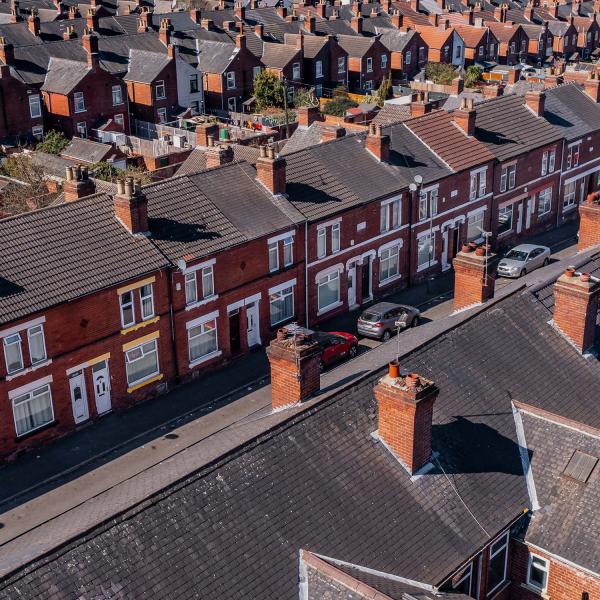Towards the end of last month, the Department for Work and Pensions published the latest version of Households Below Average Income. Not a publication with a title to set the pulse racing, perhaps, but the most thorough analysis we have of what has been happening to household incomes and inequality. This version brings the story up to the end of the 2016-17 financial year.
There is much not to be gloomy about in the figures. In 2016-17 average household incomes rose by very nearly 2 per cent, not a bad performance at all. Incomes had grown by 8 per cent from their low point in 2011-12. That’s a rate of increase that compares favourably with the years leading up to the 2008 crisis. And these are not averages pushed up by the strong performance among the very richest. This is what happened to median (middle) incomes.
In fact, those in the middle of the income distribution did about twice as well, in terms of income growth, as either the richest or the poorest. Over the past five years at least, this has not been a story of the “squeezed middle”. It is the higher earners and the poor who have been squeezed more during the period of economic recovery. That’s partly because tax and benefit changes have hit the rich and the poor and have left the middle largely unscathed. It partly reflects higher employment levels. It’s partly because the pay of higher earners has grown less than the pay of other workers over this period. And it’s partly because there are a lot of pensioners around the middle of the income distribution, and they continue to do well.
One consequence of this is that, contrary to the received wisdom, household income inequality is still lower than it was in 2008 and, broadly speaking, not much different from its level 30 years ago. Inequality grew enormously in the 1980s. The income share of the top 1 per cent carried on growing until 2008. Inequality may be too high, it may start rising again as welfare cuts bite, but it is not growing at the moment and, indeed, has been falling over the past decade.
All of which rather begs the question: why all this fuss about inequality now when nearly all the increases happened a generation ago and we have just gone through the first decade of falling income inequality since at least the 1970s?
I would hazard five reasons.
First, while inequality overall has barely changed in 30 years, the top 1 per cent carried on seeing their share of the national cake rising up to 2008. It has fallen back a bit since then, but remains at historically high levels, more than three times what it was in the 1970s. Moreover, the difference between the top 1 per cent and the rest is huge. You “only” have to double your income to move from halfway up the income distribution to 90 per cent of the way up. You have to multiply by more than five to move from the middle to the 99th centile. The top 1 per cent may well be driving much of the narrative.
Second, while income growth has been reasonable since the 2011-12 nadir, it has not been reasonable since the 2007-08 peak. Incomes grew by less than 6 per cent between 2007-08 and 2016-17, much more slowly than long-run averages. While people may be willing to tolerate high levels of inequality when they see their living standards rising, they may notice that inequality more when their living standards are not doing so well.
Third, that story of at least some income growth since 2008 hides very different experiences for different groups. Pensioners have done much better than that, those of working age rather worse. Average earnings, in particular, have had a terrible decade and remain below their 2008 peak. Income growth has come from higher payments to those over pension age and higher levels of employment, not from higher wages. Again, that is not a recipe for cheerfulness among those who are in work. Note, though, that this is not a story of increasing wage inequality in recent years. In fact, recent increases in the national living wage mean that those on the lowest wages have enjoyed the biggest increases.
Fourth, there is a lot more to this story of intergenerational inequality — it is not all, or even mostly, about pensioners’ incomes rising faster than working age incomes. Increases in house prices have benefited the older and wealthier at the expense of the young. Home ownership looks like a distant dream for many middle earners who, 20 years ago, would have expected to be safely on the housing ladder by the time they reached their early 30s. The closure of defined-benefit occupational pension schemes gives the young little hope of enjoying the pension incomes received by a substantial minority of their parents. Near-zero interest rates make saving serious sums close to impossible. Many of the younger generation must worry, perhaps for the first time in several generations, that they will end up doing less well than their parents.
Fifth, over a longer period there has been a change in the gender mix of hours and earnings. Women’s weekly earnings have grown substantially faster than men’s over the past 20 years, partly as a result of working more hours. For the first time, many low-earning men are working part-time hours and so inequality in men’s weekly earnings has grown.
Everyone will make their own judgment as to whether income inequality overall today is “too high” — but it has not been rising. Plenty of other things have been changing, though, and in ways that may matter even more for the long term than simply the differences in people’s incomes.
This article was first published by The Times and is reproduced herein full with permission. Paul Johnson is director of the Institute for Fiscal Studies. Follow him on @PJTheEconomist.








